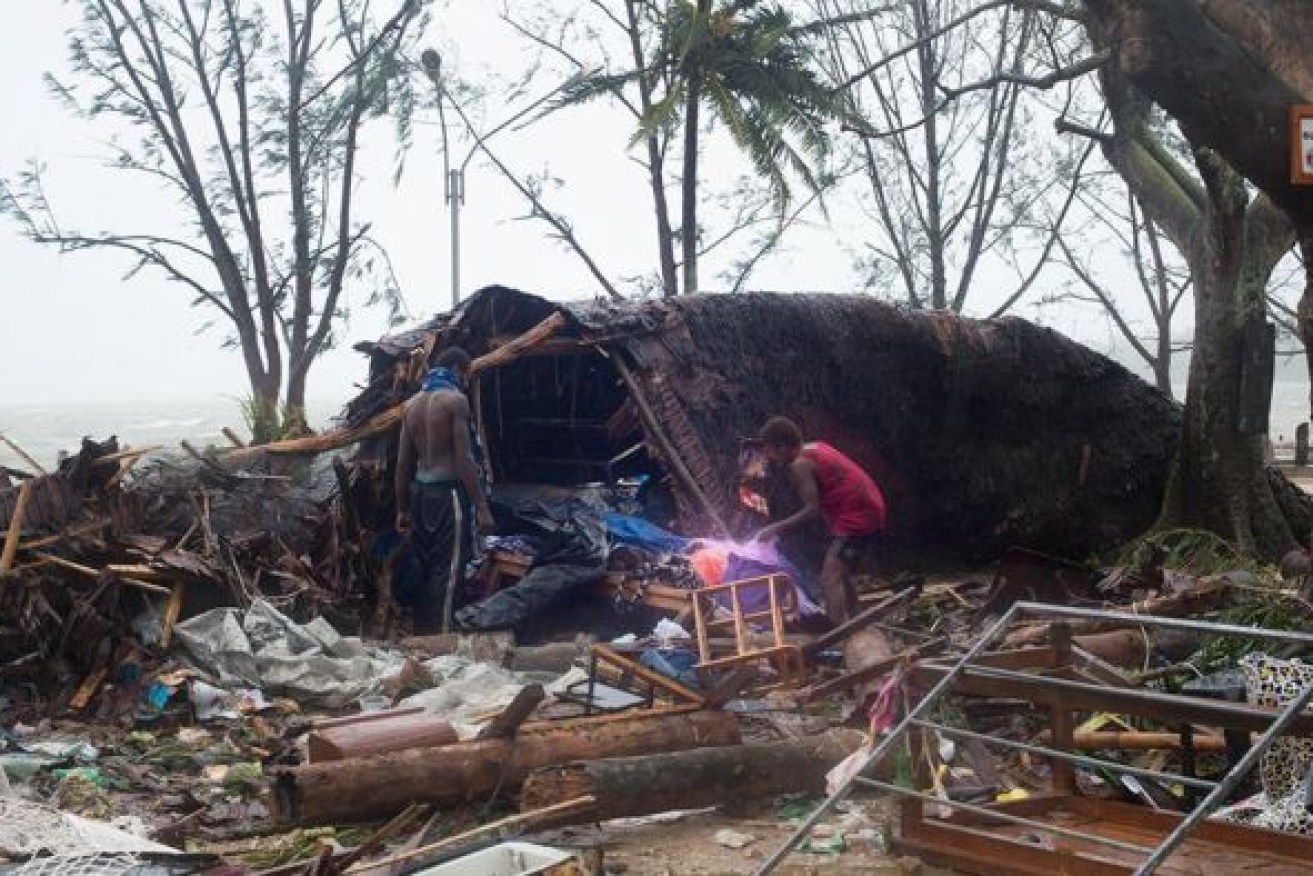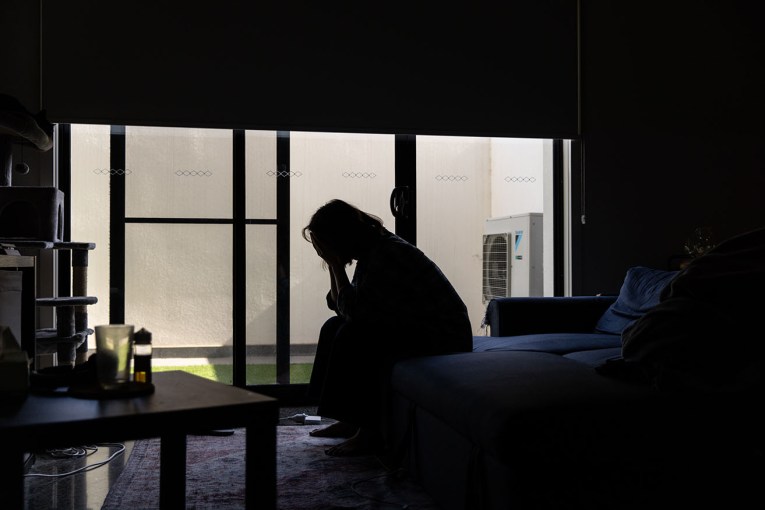Relief teams sent to Vanuatu

Residents are beginning to clean up in Port Vila, Vanuatu, after Tropical Cyclone Pam.
Disaster management teams are preparing to make their way to many of Vanuatu’s remote communities which took a direct hit from Tropical Cyclone Pam.
Six people are confirmed to have died across the country’s 65 inhabited islands after Cyclone Pam tore through the South Pacific archipelago packing winds of up to 270km/h.
• Vanuatu pleads for a ‘lending hand’
• In Pictures: The devastation of Cyclone Pam
• Vanuatu monster terrorises the South Pacific
• All the latest cyclone updates
With communications down and many areas still inaccessible, relief workers fear the death toll will be much higher.
“It is heartbreaking to see just villages literally picked up and blown away. Power lines are hanging, buildings are flattened so it is just a devastating sight,” World Vision spokeswoman Chloe Morrison said from Port Vila.
But as relief workers fan out to cover areas of the north and south flattened by the worst cyclone to hit the area in decades, they expect an even grimmer picture to emerge.
“We haven’t really got out more than a few kilometres from Port Vila to some of the rural, semi-rural areas,” Care International’s Vanuatu program director Inga Mephum told the ABC from Port Vila.
Islands in the north and south took a direct hit from the storm and it is in these areas where it is feared the death toll will be much higher.
“There’s not a lot of information [about] the islands in the north and the south, particularly in the south, the southern islands of Vanuatu where we have grave concerns for people’s welfare,” Ms Mephum said.
Port Vila resident Ben Bohane said it was likely that those in the outer islands would have felt the worst of the storm.
“Many of the outer islands are a lot more exposed than we are here in Port Vila. That means we have a lot more concrete houses and that sort of thing,” he said.
“So people here in Vila were probably in a better position to weather the storm.”
Aid teams from around the world will continue arriving in Vanuatu today as the devastation from Cyclone Pam becomes clearer.
Australian Red Cross spokesman Peter Walton said Australian aid workers would be deployed today if weather permitted.
“The Red Cross is expecting to do a further assessment today weather conditions permitting, so we’re ready to deploy some specialist aid workers with a special focus on food supplies and shelter and water and sanitation,” he said.
Aid agencies estimate at least 10,000 people have been left homeless, but authorities are struggling to gauge the extent of the damage across the country as communications remain down.
The cyclone is now moving south-east toward New Zealand.
Could be worst national disaster in history of Pacific: UN
Tropical Cyclone Pam could be one of the worst natural disasters in the history of the Pacific, according to the United Nations.
“There’s some communications to Port Villa but they are on and off but to the outer islands it’s very difficult and there’s virtually no communications at this time,” former Oxfam Vanuatu country director Alex Mathieson said.
Thousands of people are in temporary shelters, while many others are wandering the streets in the capital, Port Vila.
Alice Clements, a spokeswoman for the UN Children’s Fund (UNICEF) in Port Vila, said the damage was likely to be great.
“It felt like the world was going to end. It’s like a bomb has gone off in the centre of the town. There is no power. There is no water,” she said.
“We are hearing unconfirmed reports of casualties and lots of wounded. People are asking for help.”
Vanuatu’s president Baldwin Lonsdale made a heartfelt appeal for international support at a UN disaster conference in Japan.
“I’m speaking with you today with a heart that is so heavy,” he said.
“I stand to appeal on behalf of the government and people of Vanuatu to the global community, to give a lending hand.”
Save The Children’s Tom Skirrow said his organisation had been helping to set up the now packed evacuation centres
“Particularly in the poorer areas, entire communities have been levelled,” he said.
“The big challenge now is are we going to be able to support those people in those evacuation centres.”








